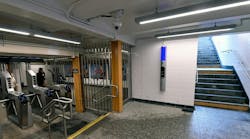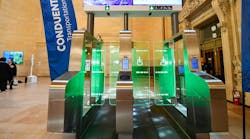Some critical information is missing from the Metropolitan Transportation Authority (MTA) New York City (NYC) Transit Queens Bus Network Redesign proposal.
What are the capital and operating costs for implementation?
How many new buses will be needed for fleet expansion to support increased frequency on both existing, along with eight new local plus limited express, select bus service, express, 27 new "rush" (moving riders more quickly with fewer intermediate stops from outlying two fare zone neighborhoods to subway or commuter rail stations), eight new overnight and one new interborough express routes?
How will articulated buses be assigned by route?
How will future electric buses be assigned by route? New York Gov. Kathy Hochul and the Metropolitan Transportation Authority have committed to convert 100 percent of the 5600 MTA city wide fleet of buses to all electric within 20 years.
What are the numbers, locations and costs for construction and installation of electric charging stations at the end of routes? You would not want buses dead heading back to the garage for recharging while in the middle of the day providing service to riders.
How many additional bus shelters will be installed? Will bus shelters be installed at bus stops adjacent to major subway stations such as the #7 Main Street Flushing, E & F Union Turnpike, J & Z Sutphin & Archer, along with other major transfer points that currently lack shelters?
Three potential new bus routes were missing from the MTA's proposed new Queens bus system. Remember former NYC Mayor Bill de Blasio's proposed $2.7 billion Brooklyn Queens Connector (BQX)? It never got off the ground. Why not a new limited stop bus route running parallel to the BQX? It could cross the Pulaski Bridge to connect Astoria, Hunters Point, Long Island City, Greenpoint, Williamsburg, the Brooklyn Navy Yard, downtown Brooklyn, Red Hook and Park Slope.
Why wait a decade or more for Gov. Hochul's proposed $5.5 billion Brooklyn to Queens Light-Rail Connector to be built? A simple new limited stop bus route could be created linking Bay Ridge, Brooklyn to Sunnyside, Queens with intermediate stops at various subway, Long Island Rail Road stations and other communities along the same corridor. Both new routes could be up and running in 2024 rather than waiting another 10 to 15 years for construction of either a street car or light-rail system. Purchasing additional new buses and operating subsidies would be far less expensive.
A simple new limited stop express bus route could be created that would connect the growing Asian communities of Flushing, Queens, Chinatown, Manhattan, Sunset Park and Bensonhurst, Brooklyn.
What is the cost and funding source for all of the above? How will the MTA NYC Transit deal with growing fare evasion for those additional new riders boarding buses? How much money from the promised $1 billion in annual Congestion Price tolling will be allocated to help finance these improvements?
It has always been a combination of funding from City Hall, Albany, the Federal Transit Administration and fares collected from riders to pick up the tab.

Larry Penner
Larry Penner is a transportation advocate, historian and writer who previously served as a former director for the Federal Transit Administration Region 2 New York Office of Operations and Program Management. This included the development, review, approval and oversight for billions in capital projects and programs for New Jersey Transit, New York Metropolitan Transportation Authority, NYC Transit bus, subway and Staten Island Railway, Long Island and Metro North railroads, MTA Bus, NYCDOT Staten Island Ferry along with 30 other transit agencies in New York and New Jersey.






